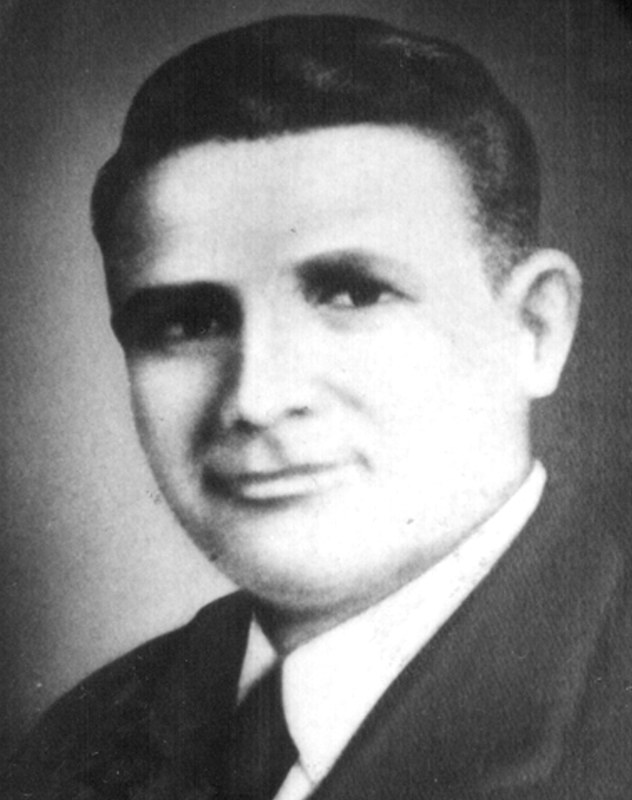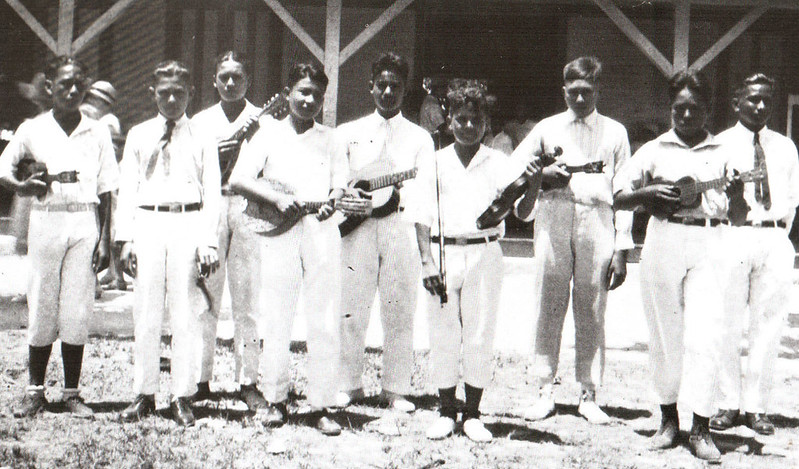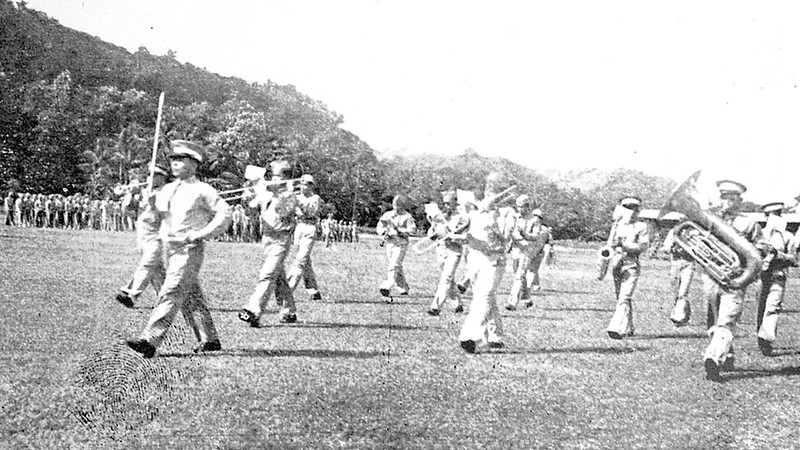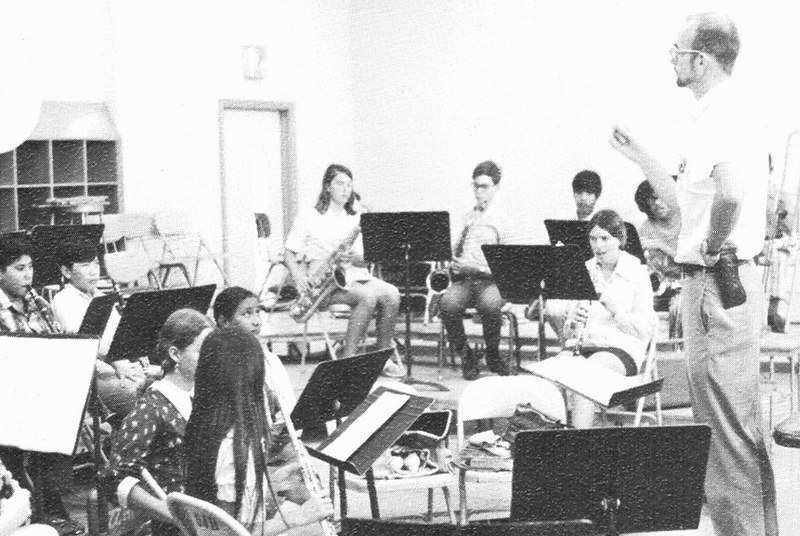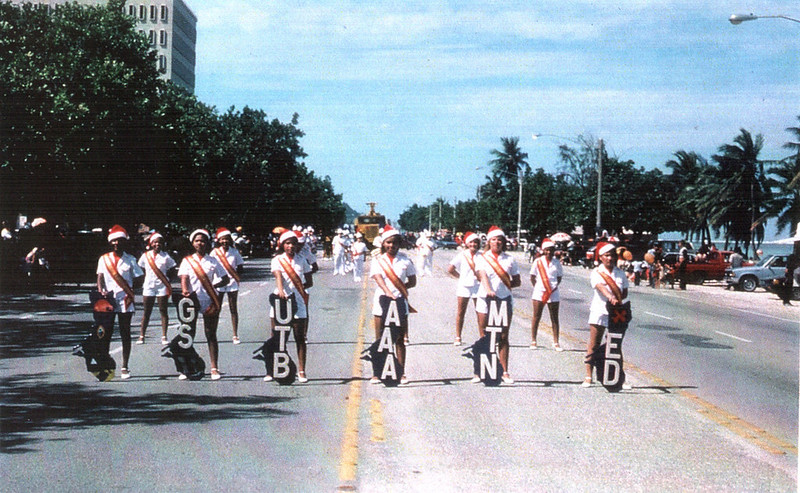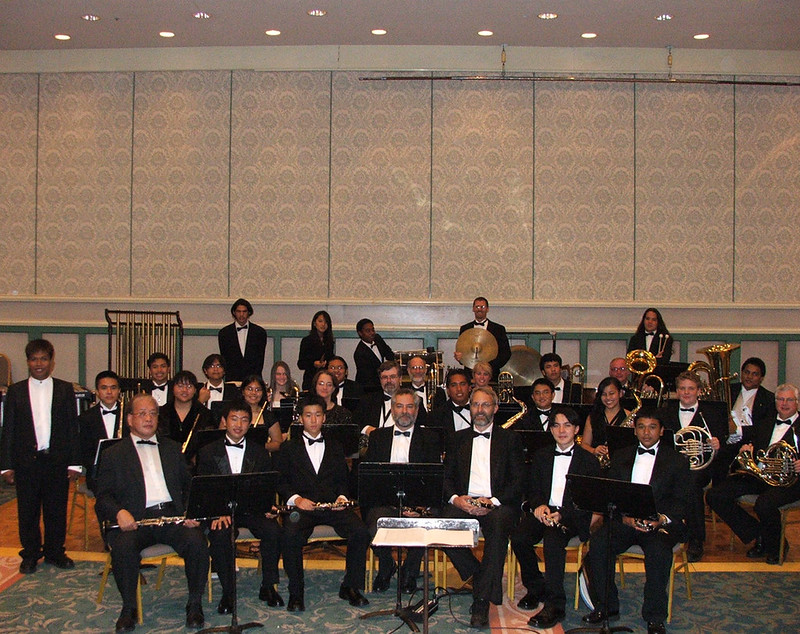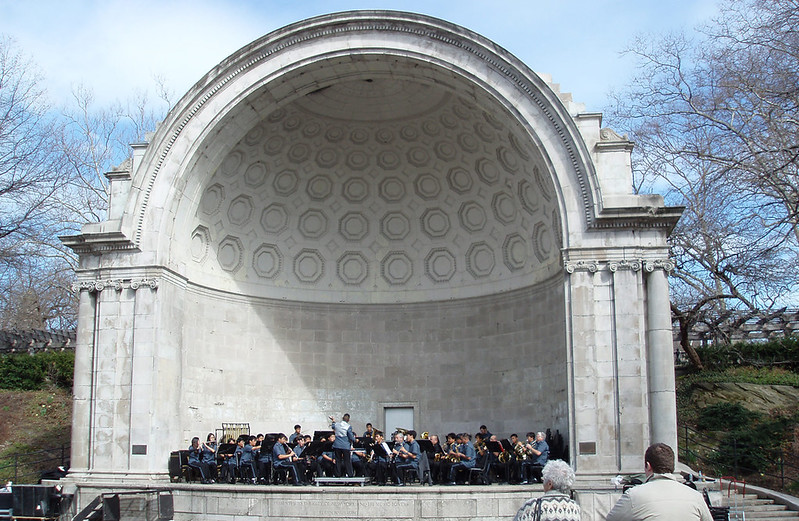View the images for the Band Ensembles entry here.
From Spanish to American styles
When Lt. Commander William Sewell served as the third American Governor of Guam beginning in 1903, he reacted poorly to the Spanish flavor of the music on island. He soon issued an order stating:
They (CHamorus) are to learn to read music…and play (band) instruments instead of maracas, mandolins, castanets and Spanish guitars.
Guam and the rest of the Mariana Islands were colonized by Spain since 1668. The Americans took the island from the Spanish in 1898 in the Spanish-American War though it would be the following year before they came to stay. The Navy brought musicians to Guam along with its first American Governor, Capt. Richard P. Leary.
A few years later, Sewell ordered all children between the ages of eight and 14 to attend school and that the curriculum include music and “a brass band that would attract the young.” US Navy men, stationed on the island at the time and who were musicians, also formed a Guam Band at this time.
These musicians included Marcello Giuseppe Sgambelluri, an Italian immigrant to America, who enlisted in the US Navy as a musician in 1897 and was stationed on Guam in 1900, along with his two Italian American fellow musicians, Ermette Pallacani and Guiseppi D’Angelo.
Sgambelluri was sent to Mare Island, California to procure instruments for the band and brought back saxophones, trumpets, tubas, trombones, coronets, clarinets, flutes and the like. He gave lessons to Guam students twice a day. The first concert by the native CHamoru brass band was held in the kiosk in the Plaza de España with Governor Sewell and his entire staff in attendance.
Sgambelluri applied for citizenship in 1914, married Joaquina Deza Camacho, retired from the Navy in 1918 and stayed on Guam. The other two Italian musicians also married CHamorus and stayed on Guam. Pellacani married Ana Sablan Reyes and D’Angelo married Luisa Untalan.
The Insular Force Navy Band, also called the Guam Band, was made up of a mixture of mostly CHamorus, a few Filipinos and the three Italian immigrants. The band played regularly at Dorn Hall School, one of the first American schools to open on Guam in 1913, located on the Plaza de España between the cathedral and the Governor’s Palace. Governor Robert Coontz directed that there would be one public reception and two dances each month here where military personnel and local leaders could learn to know and respect each other.
A US Navy Band was founded in 1918 on Guam for enlisted men only. Non-enlisted musicians continued to play in the Guam Insular Band up until World War II. When the Pan Am Clipper first visited Guam in 1935, the reception included lively march music from the Insular Force Navy Band made up mostly of CHamoru Navy enlisted men between 1916 and 1918.
During the whaling era of the 1800s CHamoru women would compose verses in honor of a ship’s visit. They sang these verses to the melody of “Gumupu si paluma” (As the bird flies). International seamen incorporated the melody into their sea songs. Ivan Carlyle claims to have found this melody as he sailed through the South Pacific and he wrote the last nine measures of the melody into his composition “The Earl and the Girl.” On Guam, bandmaster Wagstaff arranged it for the Insular Forces Navy Band in 1925 as a tribute to the CHamoru song.
Other occasions for band music on Guam were at Christmas pageants by high school students beginning in 1924 until the beginning of WWII in 1941 under the direction of Agueda Iglesias Johnston. The pageant’s central focus was the singing of Christmas carols by the entire high school student body, band music and the presentation of the birth of Christ in the traditional nativity scene.
The Insular Forces Navy Band also took part in the annual Santa Marian Kamalen procession in Hagåtña, marching just in front of the statue in the 1930s.
High school bands add to the mix
In 1966, several music lovers on Guam, including Madeleine Z. Bordallo and high school band teacher George Toal were charter members of the newly formed Guam Symphony Society. The first performing groups of the Symphony Society included the Symphony Chorale, and the Guam Symphonic Wind Ensemble (band).
That same year saw the music program began in the brand new Dededo Junior High School, since renamed Vicente Benavente Middle School. Bill Stolte was the first band director. It was directors such as Stolte, George Toal of George Washington High School and Martin Graves at John F. Kennedy High School that gave today’s top CHamoru jazz musicians and music teachers their start. Musicians from that era include Larry Franquez, Joey Franquez, Mike DiAmore, Ching Batamana, Patrick Palomo, Carlos Laguana, and Carol Flores.
In 1975, the Guam Youth Band was formed. The band’s creation was inspired by former Governor Ricardo J. Bordallo who tapped George Toal of George Washington High School to be its first director. It was truly a youth band and, as such, it set the standard for this musical organization. In 1982, its name was changed to the Guam Territorial Band.
Governor Bordallo sent the Guam Youth Band to march in the Inaugural Parade of US President Jimmy Carter in January 1977. After the drum majorette, three members carried the Guam flag, followed by the band.
Inalåhan High School’s first music department was formed under the direction of William G. Maracino in 1983-1984, about the same time that the Guam State Band was formed.
William Maracino, director of the Guam State Band, recalled that the Guam Territorial Band (Youth Band) had floundered after the retirement of George Toal. The re-elected Governor Bordallo wanted Guam to have a band that could both entertain and perform at official functions. He authorized the Insular Arts Council to fund the Guam State Band. During these years, Guam’s political status was being debated and the band’s name seemed to make a statement about the island’s intentions to become a state.
Milton Crotts took over the band from Maracino, who retired in 1986. In 1989 Governor Joseph Ada proclaimed the Territorial Band the official band of Guam. The Guam Territorial Band played for President William Jefferson Clinton in 1998, during his visit to Guam.
In 2007, a concert by the Guam Territorial Band ended a two-week competition between the islands bands and choirs. A highlight of the concert was Junior Taijeron’s arrangement of “The Earl and the Girl.” Michael Clement found the manuscript at the Bishop Museum in Honolulu while visiting Laura Thompson in 1997. This was the first known performance of the composition since the Insular Force Navy Band played it in about 1925.
Charles Hardy took over the band’s direction from 1993 until 2000 and Cheryl Bay was its director in 2000. After a three year hiatus Maximo Ronquillo, Jr. began leading the band in 2003.
Since 1993, the Guam Territorial Band participated in fifteen international music competitions and celebrations, representing the island of Guam and garnering gold, silver and bronze medals. It has given young musicians the opportunity to travel to Japan, South Korea, China, Australia, Palau, Hawaii, and New York. Star-studded venues have been the Sydney Opera House in Australia, Carnegie Hall in New York and the 2008 Olympics in Beijing, China.
The Guam Territorial Band continues the tradition started by Sgambelluri, Pellacani and D’Angelo in the early 1900s. It is a community band reinforced with high school musicians from all over the island. It brings recognition to Guam as a tourist destination and territory of the United States.
The official US Navy Band left Guam in 1995-1996. At about the same time the US Department of Defense schools were started on Guam. The schools have band music programs to the island’s agenda at the middle and high school levels. In addition, over the past two decades, private, middle and high schools have formed band programs.
Chronology of Guam Territorial Band International Performances
| 1993 | Sydney, Australia | Sydney Opera House, Australian International Music Festival |
| 1995 | Honolulu, Hawaii | Pacific Basin Music Festival |
| 1995 | Seoul, Korea | Lion’s Club International Convention |
| 1997 | Republic of Palau | 5th Anniversary, Palauan Independence |
| 1998 | England, Scotland, Wales | United Kingdom Tour |
| 1999 | Honolulu, Hawaii | Pacific Basin Music Festival |
| 1999 | Yaizu City, Japan | Friendship Tour |
| 2000 | Honolulu, Hawaii | Pacific Basin Music Festival |
| 2003 | US/Japan Relations, 150th Anniversary | |
| 2004 | Honolulu, Hawaii | Pacific Basin Music Festival |
| 2005 | Sydney, Australia | Sydney Opera House, Australian International Music Festival |
| 2005 | Saipan, Commonwealth of the Northern Mariana Islands (CNMI) | Anastasia Musical Production |
| 2006 | Honolulu, Hawaii | Pacific Basin Music Festival |
| 2006 | Saipan, CNMI | Beauty and the Beast Musical Production |
| 2007 | New York | Carnegie Hall, New York Band and Orchestra Festival |
| 2008 | Beijing, China | 2008 Olympics |
The Annual Tumon Bay Music Festival, founded by Maximo Ronquillio, brings all these public, private and Defense Department bands together in ten days of concert performances, organized under the auspices of the Guam Territorial Band. Most recently, the Army National Guard has authorized a band for Guam and is recruiting musicians. Thus concert and marching band organizations are gaining even more strength and recognition.
Michael R. Clement, Sr.
For further reading
Flores, Judy. “Art and Identity in the Mariana Islands: Issues of Reconstructing an Ancient Past.” PhD thesis, University of East Anglia, 1999.
McClain, Ernest G., and Robert W. Clopton. “Guamanian Songs: Collection of Songs Commonly Sung on Guam and Not Hitherto Notated.” Journal of American Folklore 62, no. 245 (July-September 1949): 217-229.
Scott, Mico, and Stevie Scott. Jazz on Guam: An Oral History. Hagåtña: Guam Humanities Council, 2005.


